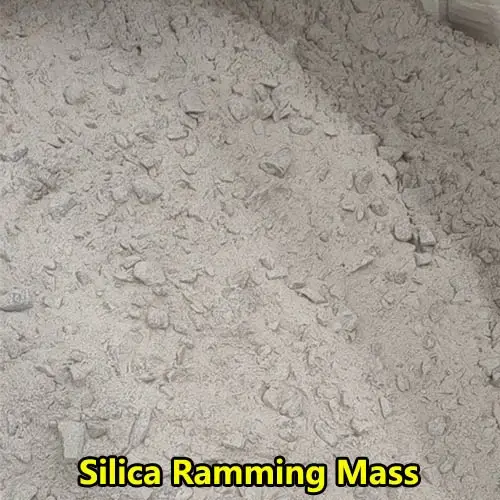Refractory castables are a type of unshaped refractory materials. They are a mixture of refractory aggregates, binders and admixtures, which can be used for construction after adding water (or liquid binder) and mixing.
Refractory castables have a certain coagulation and hardening time after construction. Therefore, after casting and forming, they need to be cured for a certain period of time before demoulding, and then they can be put into baking and use after a proper period of natural curing.
Many people have problems with their furnaces and blindly pursue the quality of refractory castables. In fact, the amount of water added also seriously affects the use effect of refractory castables. Today, let’s learn about the amount of water added to refractory castables.
Adding too much water during construction will cause the following disadvantages:
- Reduce the strength and density of the material: Refractory castables need to show good compression resistance, wear resistance and corrosion resistance under high temperature and chemical environment, which requires the material to have a certain strength and density. If the amount of water added is too large, the material will be over-dispersed, and the contact area between the particles will be reduced, resulting in reduced material strength and reduced density.
- Affect the corrosion resistance of the material: Refractory castables are usually used in chemically corrosive environments such as acids and alkalis. If the amount of water added is too large, it will cause excessive dissolution of minerals and additives in the material, thereby affecting the corrosion resistance of the refractory castable and shortening its service life.
- It is easy to cause material cracking: Due to the large amount of liquid water, the drying and curing process of the refractory castable will be greatly affected, and it is easy to crack or deform. At the same time, excessive water will also cause the internal temperature of the material to be unstable, resulting in great thermal stress between the surface and the inside of the material, increasing the risk of cracking of the refractory castable.
- Impact on construction efficiency: Refractory castables need to be constructed by pouring, pouring, vibrating, etc. If too much water is added, the material will be too thin, thus affecting the construction efficiency and uniformity.
Therefore, during the construction of refractory castables, the amount of water added must be strictly controlled, and sufficient stirring and vibration must be performed during the preparation process to ensure that the material has stable performance and quality.

How much water is appropriate when constructing castables?
This problem is often encountered in actual use. Most people will say that I add water strictly according to the construction instructions, why is it still too wet (too dry)? In fact, the amount of water added in the construction instructions is only a theoretical reference amount of water. The specific amount of water depends on the actual construction site.
After the raw materials are determined, the castables are produced after a series of processes to produce qualified refractory castables. Users can use them by adding water and stirring them when using them. However, it is precisely this step of adding water that has stumped many construction workers (either the mixture is too dry or too wet).
The reference amount of water for general refractory castables is 8%-10%. When adding water, you can add water according to the principle of “small amounts and multiple times” (control the time well, and the mixing time of the castables should not be too long). Use water to grab a handful of castables and hold them in a ball shape (spherical). If the ball falls apart immediately after holding, it means that the amount of water added is too little; if the ball-shaped castable flows down from the fingers after holding the ball, it means that the amount of water added is large; only when the ball-shaped castable does not fall apart or flow out, the amount of water added is appropriate.

